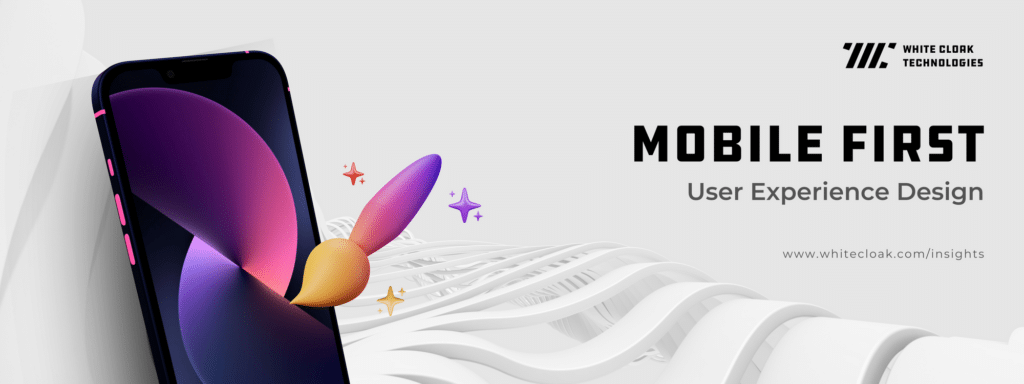Mobile internet usage has reached 4.32 billion users according to 2021 statistics published by Statista. This means that mobile devices have become the platform of choice for quickly accessing the internet and transacting businesses.
Businesses must quickly adapt from solely focusing on optimizing the user experience on desktop applications to prioritizing mobile devices first on their applications. Using a mobile-first design on applications will help ensure that the user experience on mobile devices is at the core of the application’s design.
What is Mobile First Design
Mobile-first design is an approach that focuses on product design for mobile devices first. The design approach prioritizes the user experience on the smallest screen dimensions of mobile devices.
The approach before was to take a desktop-first application and port it directly for mobile phones by taking away visual elements or functionality. This approach had a negative effect on user experience because the navigation and content were not designed to fit properly to smaller screen sizes.
The Concepts of Mobile First Design
Responsive Web Design
Responsive web design is a web design approach that enables the layout of the web or application to change based on the size and capabilities of the mobile device. This approach automatically fits the application to the screen size. It presents a rough user experience compared to applications purposely designed for mobile devices.
Progressive Advancement
Progressive advancement echoes closely with the agile development approach. The development of the application is centered on identifying the basic features and functionality first that can be applied to mobile devices with the smallest screen. As the screen size progressively increases to a desktop layout more functionality and features are added. Using progressive advancement helps ensure that the user experience on mobile devices is built into the design of the product from the start.
Graceful Degradation
Graceful degradation is an inverted approach to progressive advancement. This means that the web application is developed for desktops first and a separate version is created for smaller screen sizes for phones and tablets. Using graceful degradation can mean a lot of compromises between functionality and compatibility on mobile devices as functionality is slowly degraded as the capabilities of the devices decrease.
Best Practices for Mobile-First Design
On-Page Content: The key constraint of using mobile devices is the screen size. The layout of the content is critical to user experience. Prototyping and testing the content layout in multiple screen dimensions and orientations can help ensure that the content is easily read from any device.
- Intuitive Navigation: An intuitive and straightforward navigation system provides a neat and clean user experience. Using features like navigation drawers and hamburger menus ensure that the screen is not cluttered and the user is not overwhelmed with information.
- Limit Pop-ups: Pop-ups are useful in providing important information to customers when using the application. However, excessive pop-ups can cause content layout shifts and clutter the screen.
- Network Speed: Mobile devices often use mobile networks to connect to the internet. This means that network bandwidth should be considered in designing the applications.
A Cross-Platform Approach to Product Design
Advances in technology have led to the development of frameworks that allow software developers to create applications that can be used on multiple operating systems. A cross-platform approach to product design and development provides a number of advantages like reduced development cost, streamlined workflows, and faster deployments. Using a cross-platform framework allows developers to have a single code base for both iOS and Android operating systems.
Flutter
Flutter is an open-source development framework that is developed by Google. The framework allows developers to build cross-platform applications using object-oriented programming and rich libraries.
React Native
React Native is another popular native cross-platform development framework that utilizes the JavaScript programming language. React native is a UI-focused platform that uses the React JavaScript library to build user interfaces that are fast and responsive.
Importance of Mobile First in Product Design
Mobile devices account for 58.99% of global website traffic and have become an integral part of how we transact business. This is especially true in the banking and financial industry. A national survey in the United States conducted by the American Bankers Association has shown that 44% of customers use mobile apps to transact business versus 26% who use the desktop web version. In addition to the high number of mobile users, there are other compelling statistics that support the importance of mobile first design. For example, according to a study by Google (2018), 61% of users are unlikely to return to a mobile site they had trouble accessing and 40% visit a competitor’s site instead. This demonstrates the importance of designing for mobile devices to provide a positive user experience and avoid losing potential customers.
Another study by Google (2018) found that 53% of mobile site visits are abandoned if pages take longer than three seconds to load. This highlights the importance of optimizing for performance on mobile devices to ensure a fast and responsive user experience.
